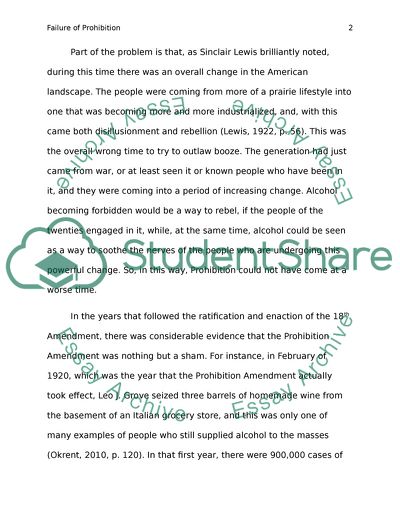Cite this document
(The Failure of Prohibition Report Example | Topics and Well Written Essays - 2000 words - 1, n.d.)
The Failure of Prohibition Report Example | Topics and Well Written Essays - 2000 words - 1. https://studentshare.org/politics/1803703-did-prohibition-succeed
The Failure of Prohibition Report Example | Topics and Well Written Essays - 2000 words - 1. https://studentshare.org/politics/1803703-did-prohibition-succeed
(The Failure of Prohibition Report Example | Topics and Well Written Essays - 2000 Words - 1)
The Failure of Prohibition Report Example | Topics and Well Written Essays - 2000 Words - 1. https://studentshare.org/politics/1803703-did-prohibition-succeed.
The Failure of Prohibition Report Example | Topics and Well Written Essays - 2000 Words - 1. https://studentshare.org/politics/1803703-did-prohibition-succeed.
“The Failure of Prohibition Report Example | Topics and Well Written Essays - 2000 Words - 1”. https://studentshare.org/politics/1803703-did-prohibition-succeed.


